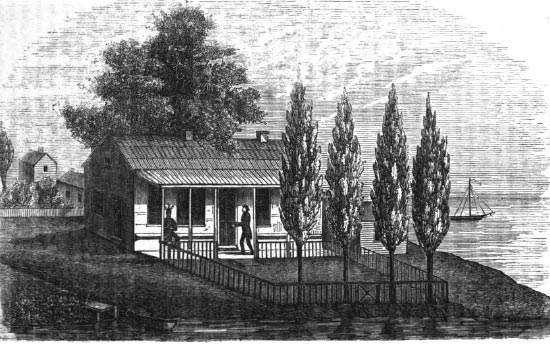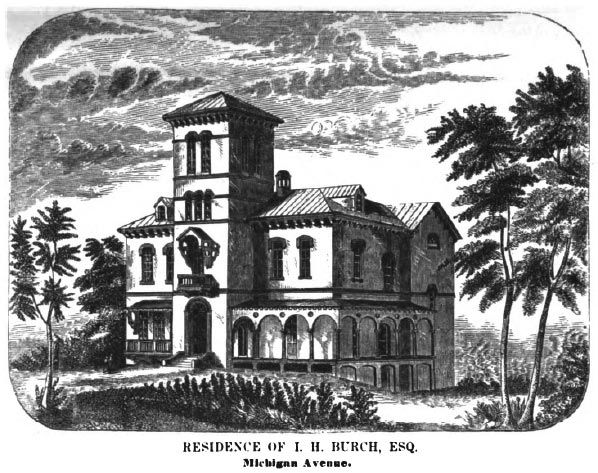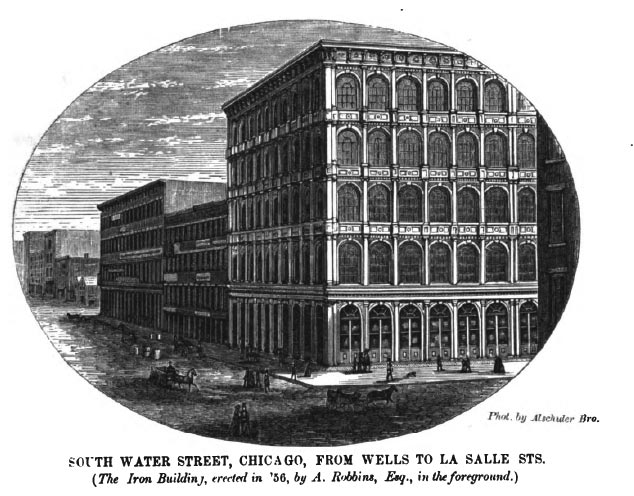
My new employer just celebrated its 40th birthday. It’s exciting to leaf through bound copies of Chicago past, if occasionally depressing; the first stack I picked up featured an article by Jack Star titled "Why the gun law doesn’t work" from February 1978, which mentioned that strict gun penalties were being enforced loosely. The more things change….
But it turns out Chicago was still pretty late to the game. I’m not talking about the Chicagoan, recently the subject of a lavish University of Chicago Press treatment. I’m talking about our ancestors, at least in name only: Chicago Magazine: The West As It Is, an 1857 publication of J. Gager & Co. for the Chicago Mechanics’ Institute.
It’s a peculiar magazine. You can practically feel the editors struggling to figure out what a magazine for the rapidly expanding city and region should be. There’s a history of Chicago church choirs, in which we learn that the first amateur concert in Chicago was held in the First Presbyterian Church in December, 1835; it was a sellout at $0.50 a ticket, "and strange to say, there was no negro minstrelsy [sic]." There are admiring biographies of the city’s great men, like William Brown, the builder of First Presbyterian and later the city’s School Agent "at a time when party greed watched for every post of profit, however small, very much as hungry dogs watched for bones, without regard to their size, or the sort of animals to which they belong." There are travelogues from both Germany and Lake Superior, the latter of which is recommended in Escape Artist fashion: "The bracing air, the stimulus of constant novelty and discovery, the freedom from the conventionalities of our fashionable watering places, all invite to this trip of the great inland lakes." There’s a long essay on American writers, which seeks to define the duality of the American mind through its words: "In no other country is the love of money so universal and intense; in no other country is absolute truth, and absolute beauty more earnestly sought after." (If the absolute beauty thing seems less familiar, keep in mind this was the age of Emerson and Thoreau.)
But the most timeless part of Chicago Magazine is its engravings, which capture the city in its childhood growth spurt. There’s the Kinzie House, originally owned by Jean Baptiste Point du Sable and sold to John Kinzie’s partner, Jean La Lime (who was later stabbed by Kinzie in what was determined to be self-defense):

There’s the city in 1820 and in 1852:


The Illinois Central railroad depot, a clear influence on the architect of Medieval Times:

The palatial Michigan Avenue residence of banker I.H. Burch, the subject of a high-profile 1860 divorce case in which he accused his wife of having a "carnal connection" with his general attorney:

And buildings that echo the First Chicago School to come, like the Iron Building:

In 1865 the Iron Building, as part of the raising of Chicago, would be the task of "the largest building raising ever effected," requiring 1,580 jackscrews, 4,000 feet of lumber, and three weeks to lift the building’s 27,000 tons a little more than two feet. The building was also involved in an 1862 Supreme Court decision which expressed "the need of the public to put up with the inconvenience of a construction site."
Illustrations: Chicago Magazine via Google Books


